Can Cold Air Intake Cause Check Engine Light? Answered
Are you looking for Can Cold Air Intake Cause Check Engine Light? Understanding the impact of a cold air intake system on your vehicle’s performance is crucial, especially when it comes to the check engine light. This article delves into the relationship between cold air intake modifications and the activation of the check engine light, offering insights and key takeaways for vehicle enthusiasts and owners.
Key Takeaways
- Cold air intakes can potentially trigger the check engine light.
- Proper installation and compatibility are essential to avoid issues.
- Sensor adjustments may be required after installation.
- Regular maintenance is key to ensuring optimal performance.
Can Cold Air Intake Cause Check Engine Light?
Yes, a cold air intake can cause the check engine light to come on. This typically happens due to changes in airflow or temperature readings that the engine’s computer (ECU) isn’t calibrated to handle, often leading to error codes from sensors like the Mass Air Flow (MAF) sensor.
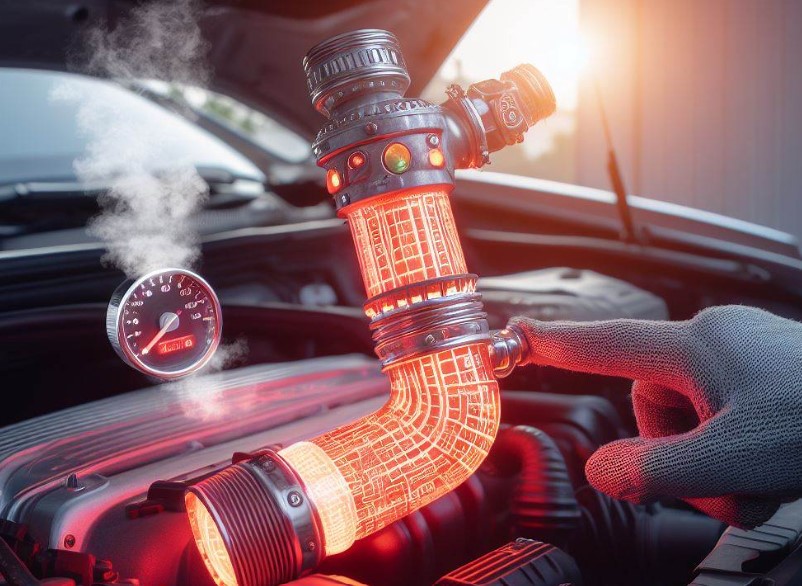
Proper installation and ensuring compatibility with your vehicle’s specific engine management system are crucial to prevent this issue.
Understanding Cold Air Intake Systems
Basics of Cold Air Intake
A cold air intake system replaces the standard airbox and filter in your vehicle with a setup designed to draw cooler air. Cooler air is denser, and contains more oxygen, which can enhance combustion efficiency and power output. However, this modification is not without its challenges.
Benefits and Potential Issues
While the benefits of a cold air intake are clear, it’s important to be aware of potential issues. Incorrect installation or a mismatch with your vehicle’s specifications can lead to problems. It’s crucial to choose a system that is compatible with your vehicle and to ensure it is installed correctly.
Reasons for Check Engine Light Illumination
- Sensor Misreading: The most common reason is a misreading by the Mass Air Flow (MAF) sensor. This sensor measures the amount of air entering the engine, and a significant change can trigger an error.
- Improper Installation: If the cold air intake is not installed correctly, it can lead to air leaks or incorrect data being sent to the engine’s computer.
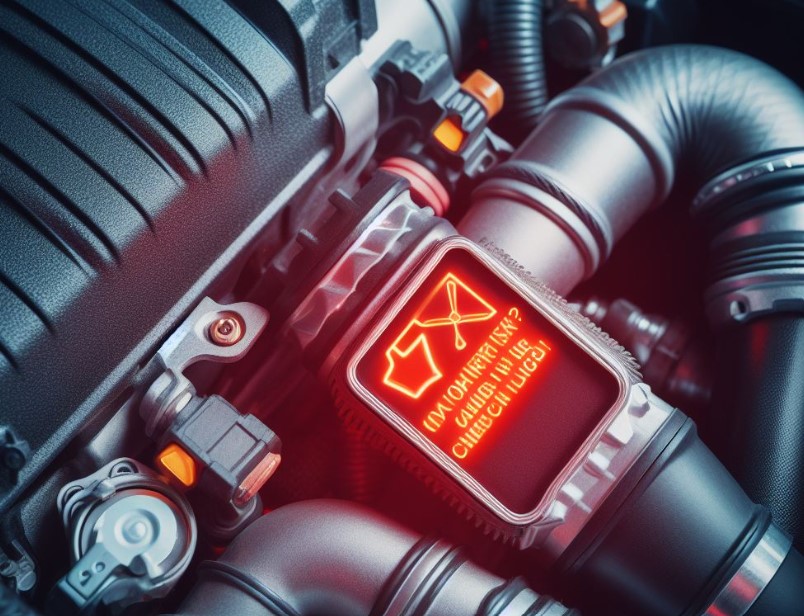
Installation and Compatibility
Choosing the Right System
Selecting a cold air intake that is compatible with your vehicle is crucial. Not all systems are created equal, and a mismatch can lead to performance issues and the activation of the check engine light.
Professional Installation and Calibration
Professional installation is recommended. A skilled technician can ensure that the system is installed correctly and can recalibrate sensors if necessary. This step is vital to prevent any adverse effects on your vehicle’s performance.
Sensor Adjustments and Maintenance
Calibrating the Mass Air Flow Sensor
After installing a cold air intake, it may be necessary to recalibrate the MAF sensor. This ensures that it accurately reads the increased airflow and prevents false readings that could trigger the check engine light.
Regular Maintenance and Checks
Regular maintenance of your cold air intake system is essential. This includes checking for leaks, ensuring clamps are tight, and cleaning or replacing the filter as needed. Neglecting maintenance can lead to performance issues and the activation of the check engine light.
Troubleshooting and Solutions
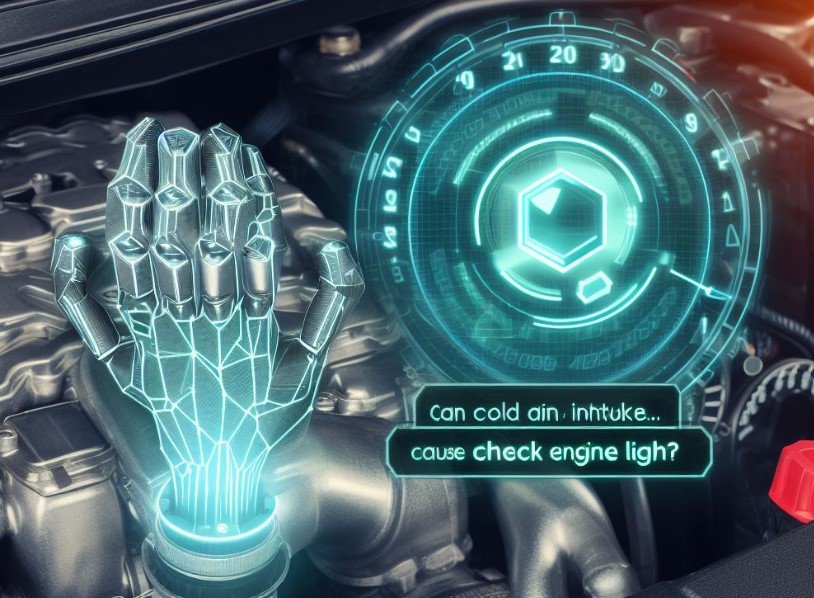
Diagnostic Tools and Techniques
If your check engine light comes on after installing a cold air intake, using a diagnostic tool can help identify the issue. These tools can read error codes from the vehicle’s computer, providing insights into what might be causing the problem.
Common Fixes and Adjustments
Common solutions include checking for leaks, ensuring all connections are secure, and recalibrating the MAF sensor. In some cases, returning to the original air intake system may be necessary if compatibility issues cannot be resolved.
Advanced Insights into Cold Air Intake and Engine Management
Continuing our exploration of the relationship between cold air intake systems and the check engine light, this section delves deeper into advanced aspects. We’ll cover the long-term effects of these systems, how they interact with engine management, and additional troubleshooting strategies.
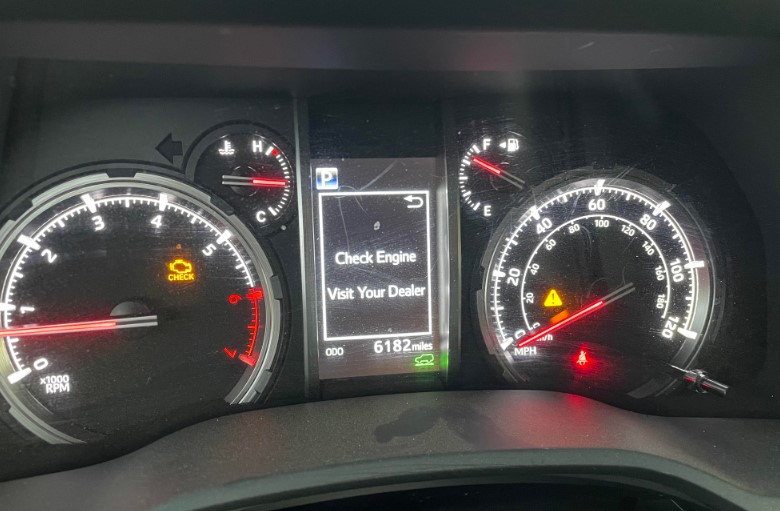
Long-Term Effects of Cold Air Intake on Engine Performance
Enhancing Engine Efficiency Over Time
Over the long term, a properly installed cold air intake can contribute positively to engine efficiency. By consistently providing cooler, denser air, these systems can help maintain optimal combustion conditions. This can lead to sustained improvements in power output and fuel efficiency.
Wear and Tear Considerations
However, it’s important to be aware of potential wear and tear. Increased airflow can sometimes accelerate the degradation of engine components. Regular checks and maintenance become even more crucial to ensure that the benefits of a cold air intake don’t turn into costly repairs down the line.
Interaction with Engine Management Systems
Adapting to Changes in Airflow
Modern engine management systems are sophisticated and can adapt to changes in airflow to some extent.
However, the extent of this adaptability varies. In some vehicles, a cold air intake might require a software update or a tuning chip to ensure the engine management system accurately processes the altered airflow data.
Impact on Fuel Injection and Timing
Changes in air density and temperature can affect fuel injection and ignition timing. The engine management system needs to adjust these parameters to accommodate the increased airflow from a cold air intake. Failure to do so can lead to suboptimal performance or even engine damage.
Advanced Troubleshooting Strategies
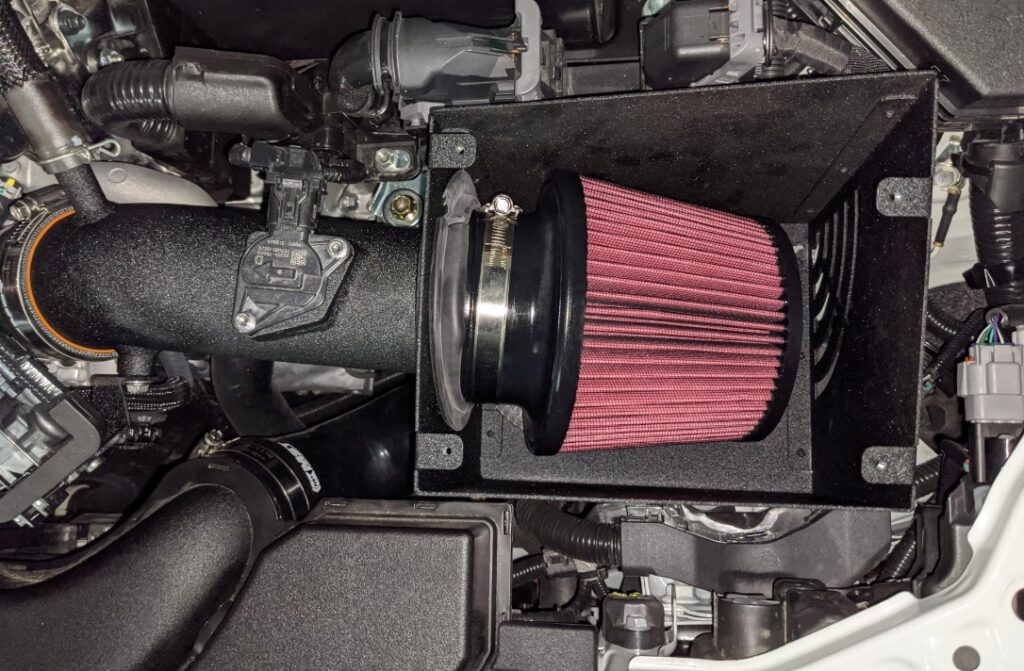
Beyond Basic Diagnostics
When the check engine light persists even after basic troubleshooting, it’s time to delve deeper. Advanced diagnostics might involve examining the entire airflow path for obstructions or leaks. It’s also wise to check the integrity and performance of related sensors and components.
Consulting with Specialists
For persistent issues, consulting with a specialist who understands the specific dynamics of your vehicle’s make and model can be invaluable. They can offer tailored solutions and modifications that go beyond generic fixes, ensuring your cold air intake works in harmony with your vehicle’s unique characteristics.
Performance Tuning and Customization
Custom Tuning for Optimal Performance
To fully harness the benefits of a cold air intake, custom tuning might be necessary. This involves adjusting the engine’s software to optimize fuel delivery, ignition timing, and other parameters in response to the increased airflow.
Balancing Power and Engine Health
While tuning can unlock greater performance, it’s crucial to balance this with engine health. Overly aggressive tuning can strain the engine, leading to premature wear or even failure. A responsible approach ensures you enjoy enhanced performance without compromising the longevity of your engine.
The Future of Cold Air Intake Technology
Innovations and Developments
The field of cold air intake technology is continually evolving. Manufacturers are developing systems that integrate more seamlessly with modern engine management systems, reducing the likelihood of issues like the check engine light coming on.
Anticipating Changes in Emission Standards
As emission standards become stricter, the design of cold air intakes will need to adapt. Future systems may include features that not only improve airflow but also help in reducing emissions, aligning performance upgrades with environmental considerations.
How Does A Cold Air Intake Work In Engine?
A cold air intake system functions by drawing in cooler outside air into the engine for combustion. Cooler air is denser than warm air and contains more oxygen, which is essential for the combustion process in an engine.
When more oxygen is available, the engine can burn the fuel more efficiently, leading to better combustion, increased horsepower, and improved overall engine performance.
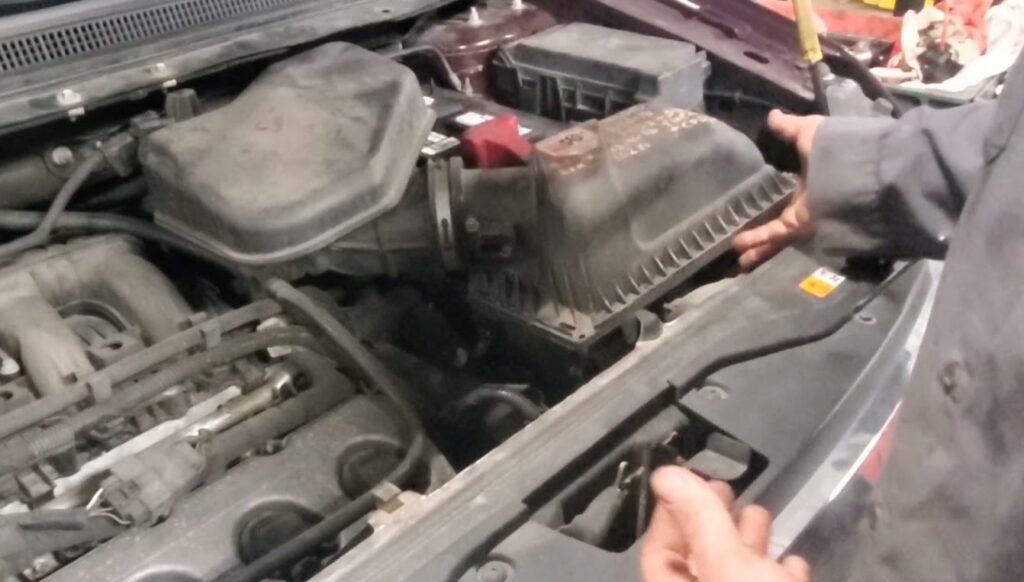
The system typically consists of a longer air intake tube, designed to reach areas outside the engine bay where the air is cooler. This tube is connected to a more efficient, often larger air filter, which can be located away from the hot engine air.
By positioning the intake and filter in this way, the system ensures that the air drawn into the engine is as cool as possible.
The design of the cold air intake also plays a role in enhancing the engine’s sound. Removing the baffles of the standard air box, which are designed to quiet the intake noise, results in a more pronounced and aggressive sound during acceleration.
How To Install A Cold Air Intake In Engine To Avoid Check Engine Light?
Installing a cold air intake system correctly is crucial to avoid triggering the check engine light. Here are detailed steps and considerations for a proper installation:
- Choose the Right Kit: Ensure the cold air intake kit is compatible with your specific vehicle model. This compatibility is crucial to avoid issues with fitment and engine sensor readings.
- Prepare Your Vehicle: Before installation, make sure the vehicle is turned off and cooled down. Disconnect the negative terminal of the battery as a safety precaution.
- Remove the Existing Air Intake System: Carefully remove the factory air intake system, including the air filter, air box, and tubing. Be cautious not to damage any nearby components or sensors.
- Install the New Air Intake Tube: Fit the new air intake tube, ensuring it’s properly aligned and secured. Avoid any sharp bends in the tubing that could restrict airflow.
- Install the Air Filter: Attach the new air filter. It should be positioned away from high-heat areas to draw in cooler air. Ensure it’s securely fastened to prevent unfiltered air from entering the engine.
- Reconnect Sensors: If your cold air intake system includes a Mass Air Flow (MAF) sensor or any other sensors, reconnect them carefully. Incorrect sensor installation can lead to incorrect readings and trigger the check engine light.
- Check for Leaks: After installation, check all connections for any air leaks. Leaks can cause the engine to draw in unfiltered or warm air, reducing the system’s efficiency and potentially causing the check engine light to come on.
- Reconnect the Battery and Test: Once everything is installed and checked, reconnect the battery. Start the engine and listen for any unusual sounds. It’s advisable to take a short test drive to ensure the system is working correctly and that the check engine light does not illuminate.
Remember, if you’re not confident in your ability to install the system correctly, it’s best to seek professional help. A poorly installed cold air intake can lead to engine performance issues and potentially costly repairs.
Will A K&N Cold Air Intake Cause Check Engine Light?
K&N cold air intakes are popular aftermarket upgrades designed to improve engine performance by increasing airflow. However, like any modification, there’s a possibility it could trigger the check engine light (CEL).
This usually happens due to changes in airflow or temperature readings that the engine’s computer (ECU) isn’t calibrated to handle.
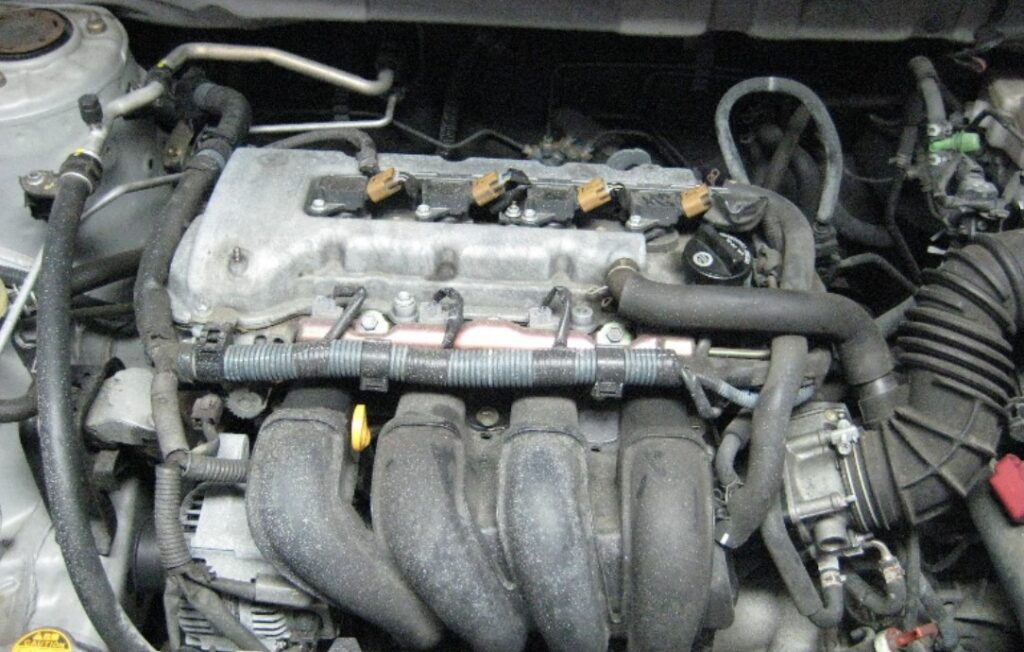
When a K&N cold air intake is installed, the Mass Air Flow (MAF) sensor readings can change significantly. The MAF sensor measures the amount of air entering the engine, and a drastic change can trigger an error code, illuminating the CEL.
This is often because the ECU interprets the increased and cooler airflow as a potential issue, especially if it’s outside the parameters set for the stock intake system.
It’s also important to ensure that the intake is installed correctly. An improper installation can lead to air leaks or incorrect data being sent to the ECU, which can also trigger the CEL.
In summary, while a K&N cold air intake can potentially cause the check engine light to come on, this is not a guaranteed outcome and often depends on factors like correct installation and the vehicle’s specific engine management system.
Can A Cold Air Intake Mess Up Your Engine?
The question of whether a cold air intake can damage your engine is nuanced. Generally, when a cold air intake is selected appropriately for your vehicle model, installed correctly, and maintained properly, it should not cause damage to your engine.
In fact, it’s designed to enhance performance. However, there are scenarios where a cold air intake could potentially lead to engine issues:
- Incorrect Installation: If the cold air intake system is not installed correctly, it can lead to problems like air leaks or sensor misplacements. These issues can cause the engine to run lean (too much air in the air-fuel mixture), which can overheat the engine and lead to damage.
- Hydrolocking: This is a risk if the intake is positioned in such a way that it could ingest water (e.g., driving through deep puddles). If water enters the combustion chamber, it can cause hydrolock, which can severely damage the engine.
- Engine Wear: Over time, if the air filter is not maintained properly, it can allow dirt and debris into the engine, leading to increased wear and tear.
- Sensor Damage: In some cases, oiled filters like those used in some cold air intake systems can cause build-up on the MAF sensor, leading to incorrect readings and potential engine running issues.
It’s important to note that these risks are relatively low, especially with high-quality systems like those from reputable manufacturers. Regular maintenance and correct installation are key to avoiding these problems.
Can An Engine Air Filter Cause A Check Engine Light?
Yes, an engine air filter can indeed cause the check engine light (CEL) to illuminate, though it’s not a common occurrence. The engine air filter is a critical component in maintaining the engine’s proper airflow.
When an air filter becomes excessively dirty or clogged, it restricts the airflow to the engine. This restriction can adversely affect the engine’s performance and may trigger the CEL for a few reasons:
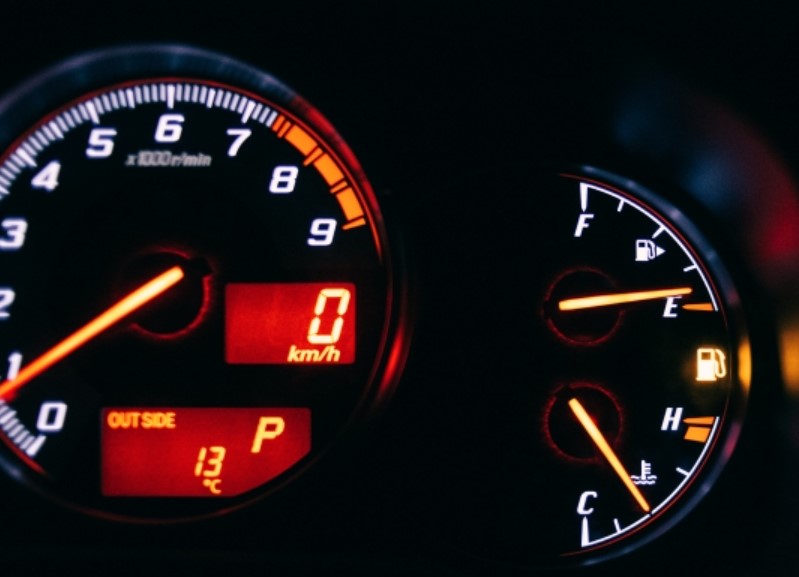
- Reduced Airflow: A clogged air filter limits the amount of air reaching the engine, which can alter the air-fuel mixture. This imbalance can cause the engine to run lean (too much air) or rich (too much fuel), leading to inefficient combustion and potential error codes from the engine’s sensors.
- Impacted Sensors: Modern vehicles rely on a series of sensors to monitor engine performance. A dirty air filter can affect the readings of sensors like the Mass Air Flow (MAF) sensor. If the MAF sensor detects an abnormality in the airflow, it may trigger the CEL.
- Poor Engine Performance: Restricted airflow can lead to reduced engine power, rough idling, or even stalling. These performance issues can prompt the vehicle’s onboard diagnostics system to activate the CEL.
It’s important to regularly check and replace the air filter as part of routine vehicle maintenance to prevent such issues. A clean air filter ensures optimal airflow, which is crucial for the efficient operation of the engine.
How Do I Know If My Cold Air Intake Is Bad?
Determining if your cold air intake is bad or malfunctioning involves observing several key indicators.
A properly functioning cold air intake should enhance engine performance, not detract from it. Here are signs to look out for:
- Reduced Performance: If you notice a decrease in acceleration, power, or fuel efficiency, it could indicate an issue with the cold air intake. This could be due to leaks, blockages, or improper installation.
- Unusual Engine Sounds: A well-functioning cold air intake can change the sound of your engine, but any rattling, whistling, or unusual noises can be a sign of a problem, such as loose components or leaks.
- Check Engine Light: As previously mentioned, changes in airflow can trigger the check engine light. If the CEL comes on after installing a cold air intake, it could be due to incorrect installation or a compatibility issue with your vehicle’s sensors.
- Visible Damage or Dirt Accumulation: Regularly inspect the cold air intake for any physical damage, loose connections, or excessive dirt on the air filter. A damaged or dirty intake system can negatively impact engine performance.
- Error Codes: Using an OBD-II scanner can help identify specific issues. Error codes related to the MAF sensor or air intake system can indicate problems with the cold air intake.
If you suspect your cold air intake is bad, it’s advisable to consult with a professional mechanic or revisit the installation process to ensure everything is correctly set up and functioning.
Conclusion
In conclusion, while a cold air intake can indeed cause the check engine light to come on, understanding and addressing the underlying issues is key.
Proper selection, installation, and maintenance can mitigate these risks, allowing you to enjoy the performance benefits without compromising reliability. Remember, compatibility and correct installation are paramount to ensure your vehicle runs smoothly with a cold air intake system.
Top FAQ’s
Can I install a cold air intake myself, or should I get a professional?
If you have basic mechanical skills, you can install a cold air intake yourself. However, for complex engine setups or to ensure optimal performance and avoid issues like a triggered check engine light, professional installation is recommended. This is especially true for vehicles requiring tuning adjustments post-installation.
Are there legal restrictions on using cold air intakes?
In some regions, yes. Certain areas have strict emission and noise regulations that aftermarket intakes must comply with. Always check local laws and regulations before installing a cold air intake.
Can a cold air intake cause problems in cold weather?
Generally, cold air intakes perform well in cold weather, as they can provide even cooler air to the engine. However, in extremely cold conditions, there’s a slight risk of freezing or moisture accumulation, which could affect performance.
Is it normal for the car to sound different after installing a cold air intake?
Yes, a change in the intake sound is common. Cold air intakes often remove the baffles found in standard air boxes, leading to a more pronounced and aggressive engine intake sound.
How often should I clean or replace the filter on my cold air intake?
This depends on the type of filter and your driving conditions. Generally, cleaning every 15,000 to 30,000 miles is recommended. For vehicles frequently driven in dusty or dirty conditions, more frequent cleaning or replacement may be necessary.

Welcome to the exhilarating world of Matt Rex, a professional car racer turned renowned vehicle enthusiast. Immerse yourself in his captivating blog as he shares heart-pounding adventures, expert reviews, and valuable insights on cars, trucks, jets, and more. Fuel your passion for speed and discover the beauty of vehicles through Matt’s engaging stories and meticulous expertise. Join the ever-growing community of enthusiasts who find inspiration and expert advice in Matt Rex’s blog—a digital hub where the thrill of speed meets the pursuit of knowledge.







